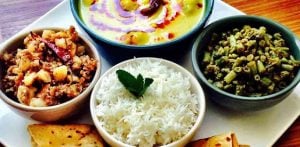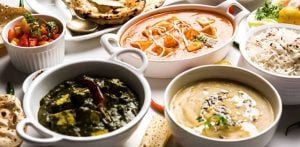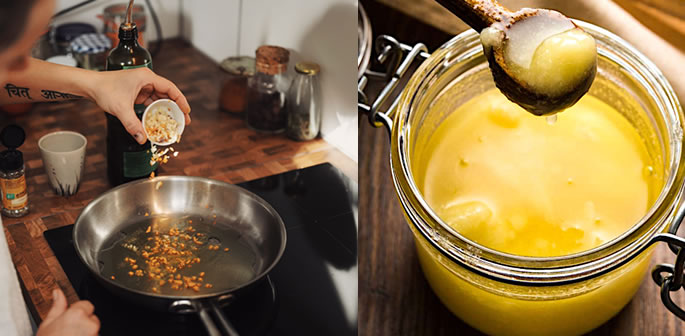"Eating Desi ghee is a good thing"
Indian food is known for its vibrant colours and aromatic spices.
Although has captivated foodies, myths often surround this cuisine.
From assumptions about its spiciness to misconceptions regarding its healthfulness, Indian food is subject to a myriad of misunderstandings.
However, by peeling back the layers of misinformation, we uncover the truth behind these myths, shedding light on the real essence of one of the world’s most diverse and beloved cuisines.
Join us as we delve into the heart of Indian gastronomy, separating fact from fiction, and gaining a deeper appreciation for the flavours, traditions and cultural significance that define this culinary marvel.
Prepare to have your taste buds tantalised and your perceptions challenged as we embark on a journey to demystify the myths surrounding Indian food.
It has Unhealthy Fats
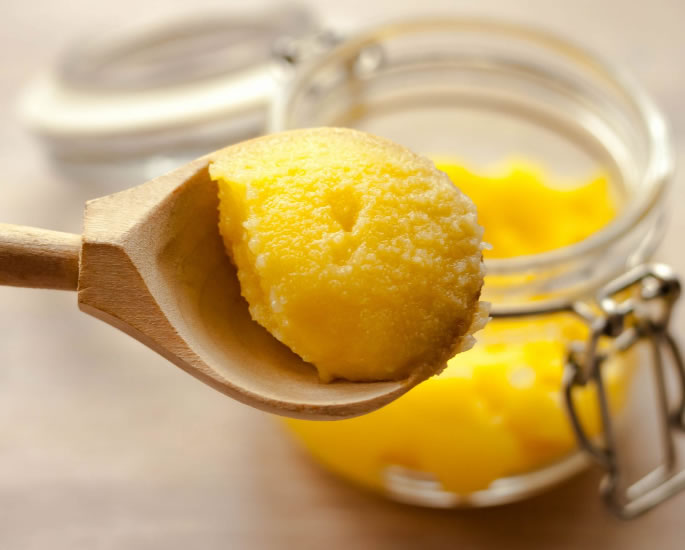
Indian food has garnered a reputation for its indulgent use of fats, oils and ghee, which are often perceived as contributors to unhealthy eating habits.
While it is undeniable that Indian cooking embraces the richness of ghee, oils and fats, it would be a misconception to label all Indian food as inherently unhealthy.
In reality, using ghee in particular, holds a significant place in traditional Indian cooking and is not solely about indulgence but also about its revered health benefits.
Ghee has been celebrated for centuries in Ayurvedic sciences for its multifaceted advantages.
Contrary to common belief, ghee is not merely a source of empty calories but contains a complex composition that offers essential nutrients vital for maintaining overall health.
Its richness in vitamins A, D, E and K provides a valuable nutritional boost, enhancing the nutritional profile of the dishes it flavours.
Responding to a question, nutritionist Rujuta Diwekar says:
“Eating Desi ghee is a good thing, however, I do hope you are making the omelette with the yolk because you know making the omelette with Desi ghee but without the yolk is cheating on yourself.
“So have the full egg and Desi ghee.”
Therefore, while Indian cooking may appear to liberally incorporate ghee, it does so with an understanding of its nutritional merits, aligning with the holistic approach to wellness ingrained in Ayurveda.
It is Heavily Spiced

When you think of Indian food, you think of it being laden with spices.
However, what many fail to realise is that Indian spices serve a multifaceted role beyond merely adding heat to dishes.
These aromatic ingredients play a pivotal role in elevating the overall flavour profile, harmonising disparate elements, and a variety of tastes that not only tantalise the palate but also offer a plethora of health benefits.
Beyond their role as flavour enhancers, spices serve as natural regulators of digestion, aiding in the body’s ability to process and absorb nutrients effectively.
Additionally, they possess inherent preservative properties, historically utilised to extend the shelf life of foods in the absence of modern refrigeration techniques.
Delving deeper into their medicinal properties, many Indian spices boast anti-diabetic and anti-inflammatory attributes, contributing to improved overall health and well-being.
These inherent qualities make Indian cuisine not only a feast for the senses but also a source of potential health-promoting properties, aligning with the holistic approach to wellness ingrained in traditional Indian culinary practices.
Sanjyot Keer, of The Food Lab, says: “Indian food is not spicy but flavourful.
“Kadhi rice, which is a very crucial dish in every Indian home, is not spicy but tasty.”
“Every region of India does cook something spicy, same as every cuisine in the world has something spicy and easy on the tummy.”
It is Hard to Cook

Indian food is often associated with difficult and time-consuming cooking processes, it is important to recognise that every dish requires extensive labour.
In fact, many Indian recipes are very easy and can be prepared with just a handful of ingredients, coming together in surprisingly little time.
With all the necessary ingredients at hand, it becomes remarkably easy to whip up satisfying and flavorful dishes in no time.
Contrary to this myth, several classic dishes exemplify this simplicity.
Favourites like butter chicken and paneer tikka are perfect examples of recipes that require minimal effort yet yield delicious results.
By utilising a few key spices and basic cooking techniques, these dishes showcase the essence of Indian cooking in a way that is accessible and achievable for home cooks of all skill levels.
It is Mainly Vegetarian & Lacks Nutrients
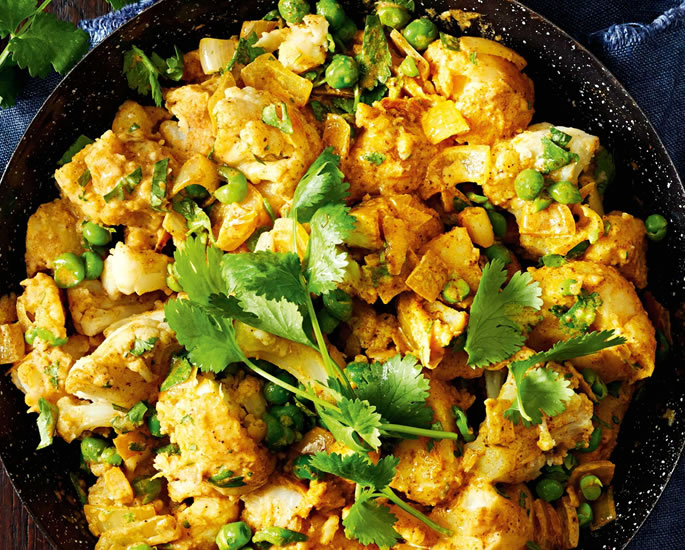
A lot of Indian dishes are vegetarian. But to think Indian vegetarian meals lack essential proteins and nutrition would be erroneous.
On the contrary, Indian vegetarian cooking is rich in a diverse array of ingredients such as lentils, legumes, curries and dairy products, all of which contribute to a well-rounded nutritional profile.
These ingredients ensure that Indian vegetarian dishes are not only flavourful but also packed with proteins, vitamins and minerals essential for maintaining optimal health.
Lentils and legumes, for instance, are excellent sources of plant-based proteins, while dairy products such as paneer and yoghurt provide calcium, vitamin D, and other vital nutrients.
The cuisine’s characteristic makes it an ideal addition to a healthy diet, offering a plethora of nutrient-rich options that cater to vegetarians and non-vegetarians alike.
Whether one chooses to indulge in a hearty daal, a creamy paneer curry or a nutritious vegetable pulao, the abundance of protein-packed ingredients ensures that every meal is not only satisfying but also nutritionally balanced.
It is all Curries
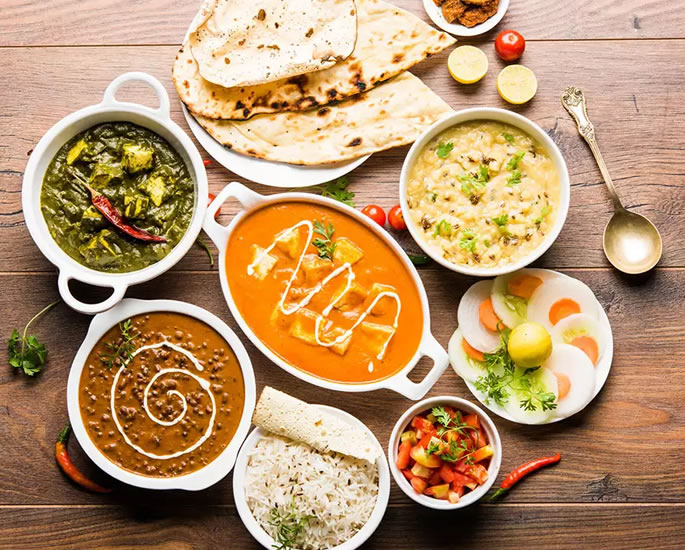
While curries hold a prominent place in Indian cuisine, it extend far beyond these dishes.
Indian gastronomy boasts an extensive repertoire that encompasses an array of dishes, ranging from delectable snacks to indulgent desserts and everything in between.
The versatility and diversity of Indian cooking ensure that there is never a shortage of flavours to explore, promising a lifetime of culinary discoveries.
Beyond curries, Indian cuisine offers an unparalleled spectrum of tastes, textures and aromas.
From samosas to kheer, from chaat to biryani, each dish presents a unique sensory experience, showcasing the rich cultural tapestry of India.
Indian culinary traditions cater to every preference and palate.
By unravelling the myths surrounding Indian food, we have journeyed through a landscape of flavours, traditions, and cultural heritage.
Through our exploration, we have dispelled misconceptions and shed light on the true essence of this beloved cuisine.
From the misconception of Indian food being very spicy to the notion that vegetarian dishes lacks nutritional value, we have uncovered the nuanced truths that underlie Indian gastronomy.
As we conclude our journey, let us not only savour the deliciousness of Indian cuisine but also appreciate the depth of its heritage and the diversity of its regional influences.
























